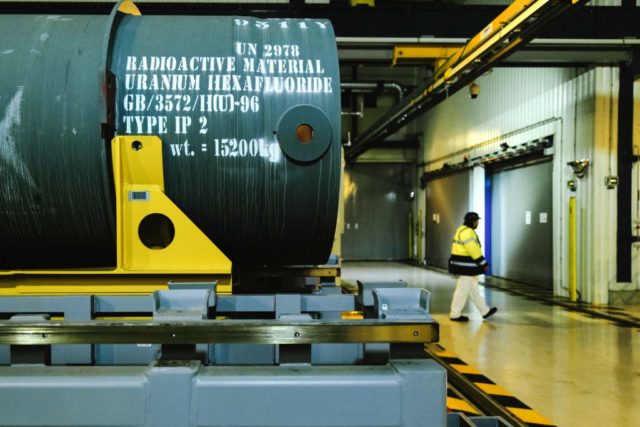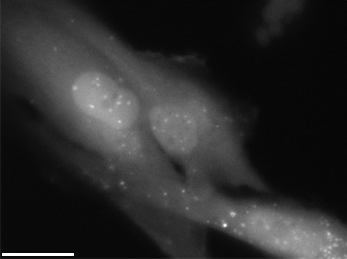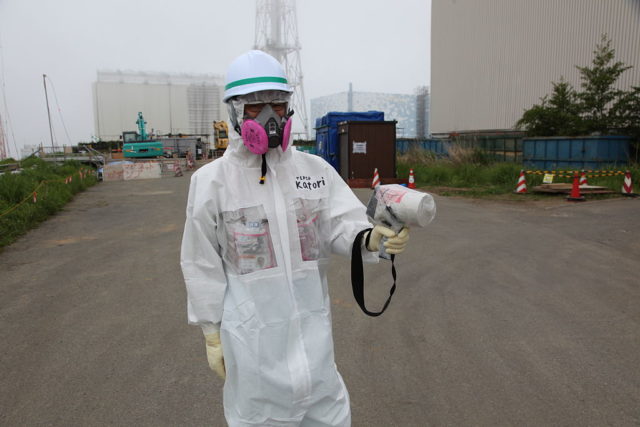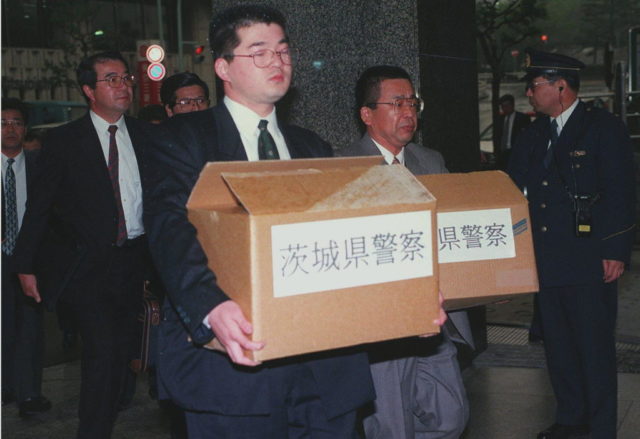On September 30, 1999, Hisashi Ouchi and two colleagues at the Japan Nuclear Fuel Conversion Co. (JCO) were rushing to complete an order of nuclear fuel before the shipping deadline at the Tokaimura Nuclear Plant, Japan’s first nuclear power station. To save processing time, the three men mixed the nuclear chemicals by hand instead of using the correct protocols.
As Ouchi leaned over the fuel tank, pouring uranium from a stainless steel bucket, a nuclear reaction blasted his body with more radiation than any human had ever been exposed to. In the 83 days following the accident, Ouchi was kept alive against his will while his body was liquified from extreme radiation poisoning.
This wasn’t the first Tokaimura Nuclear Plant accident
Situated in Tōkai, Japan, JCO was part of a network of nuclear power plants that provided the majority of Japan’s energy. After the country’s first commercial nuclear power station was opened at Tōkai, dozens of other companies and institutions were established to provide the plants with fuel, nuclear research, enrichment, and proper disposal.

Just two years before the events in 1999, an explosion rocked a nuclear storage facility belonging to the Japanese Power Reactor and Nuclear Fuel Development Corporation (PNC). Poor employee training and education led to shortcuts in the low-level liquid waste process, which traps nuclear waste in asphalt for proper storage. This eventually led to an explosion that spread low amounts of radiation through the surrounding area.
It was originally reported that radiation levels were only 20 percent above normal outside the building, but it was later revealed to be ten times higher than the original number. It was also discovered that several maintenance staff members were out playing golf, leaving the remaining workers understaffed.
The PNC facility was closed until 2000, but the tragedy that would occur in 1999 proves that little was learned from the mistakes of the first accident.
How Ouchi became the most radioactive man in history
On the morning of September 30, 1999, JCO technicians Hisashi Ouchi, Masato Shinohara, and Yutaka Yokokawa were told to mix a new batch of nuclear fuel for the Joyo experimental fast breeder reactor while on a tight deadline. Located four miles away from the PNC plant where the 1997 accident occurred, the JCO plant converted uranium hexafluoride into enriched uranium dioxide fuel, an essential product used in nuclear reactor fuel rods.

It was JCO’s first batch of fuel for the Joyo reactor in three years, and employees were never given proper training for the whole process. Hoping to meet their deadline – and totally unaware of the potential consequences – the three fuel technicians decided to cut some corners. They mixed the chemicals in stainless-steel buckets and added them to the wide dissolution tank instead of gradually introducing the chemical components over a longer period of time using the narrow, tall buffer tank as per the proper protocol.
The technicians dumped the seventh bucket of chemicals into the dissolution tank, causing the mixture to reach “critical mass” or the smallest amount of nuclear fission needed to cause a reaction. The solution added to the tank contained seven times the legal limit of aqueous uranyl nitrate – a radioactive fuel used to power nuclear reactors.

The wide tank created the perfect conditions for a nuclear reaction, and an uncontrolled chain of nuclear fission began instantaneously as Ouchi and Shinohara leaned over the tank. The technicians saw a blue flash in the tank, likely a sign of intense radiation, as the chain reaction continued and radiation alarms sounded.
Ouchi and Shinohara were blasted with Gamma-ray radiation, causing immediate pain, nausea, and difficulty breathing. Ouchi received the largest dose of radiation exposure, which led him to vomit and lose consciousness. They eventually managed to evacuate the building along with other workers, unaware that they had exposed far more than themselves to dangerous levels of radiation.
The event would be Japan’s worst nuclear accident up until the Fukushima nuclear disaster in 2011.
83 days of horror
The three technicians had become radioactive weapons in their own right. All three of them experienced high doses of radiation. Yokokawa received three sieverts (Sv), Shinohara received 10 Sv, and Ouchi was exposed to 17 Sv – nearly double the lethal amount.
Ouchi was transferred to the University of Tokyo Hospital for treatment. Doctors were shocked to find he had a near-zero white blood cell count and therefore had virtually no immune system. Most of his body was covered in severe radiation burns and his internal organs were damaged.

In an attempt to restore some immune function, Ouchi received an experimental peripheral blood stem cell transplant from his sister. He was also given skin grafts, but with his chromosomes completely irradiated, he could not regenerate new skin cells to help the grafts take. Eventually, when bandages were removed, Ouchi’s skin came off with them and blood streamed from his eyes.
Ouchi also suffered from multiple heart attacks, and each time he was resuscitated at his family’s request even though his condition was irreversible. He once had to endure three heart attacks in just one hour. “I can’t take it anymore,” Ouchi reportedly cried out. “I am not a guinea pig.”
After 83 days in the hospital, Hisashi Ouchi died from a heart attack induced by multiple organ failure on December 21, 1999. He was finally free from the excruciating pain of extreme radiation.
Aftermath
The 1999 Tokaimura nuclear accident impacted thousands of people. Ouchi’s co-worker Shinohara lived for seven months after the incident, suffering from similar radiation symptoms including skin loss, organ failure, and the collapse of his immune system. He died from lung and liver failure on April 27, 2000.

Yokokawa, the third worker and supervisor who was several feet away from Ouchi and Shinohara during the initial blast of radiation, survived minor radiation sickness. He was charged with criminal negligence a year after the accident.
JCO, the company where the three men worked, was forced to pay $121 million in compensation to locals who were forced to evacuate their homes during the accident. Twelve hours after the initial incident, 300,000 residents were told to stay indoors and stop any agricultural work – the only form of income for many local families. It took 15 days for JCO to provide the public with sandbags and other protective equipment.

At least 667 employees, residents, and emergency workers tested positive for excess radiation following the accident. Even after the plant was completely sealed off, radioactive gas levels remained high. Eventually, it was discovered that a roof ventilation fan had been left on, spreading the radioactive matter into the air.
More from us: Love Canal in Niagara Falls Was Built on Something Not Very Lovely
The nuclear power plant in Tōkai operated for another decade until the 2011 Tōhoku earthquake and subsequent tsunami. It did not reopen.
